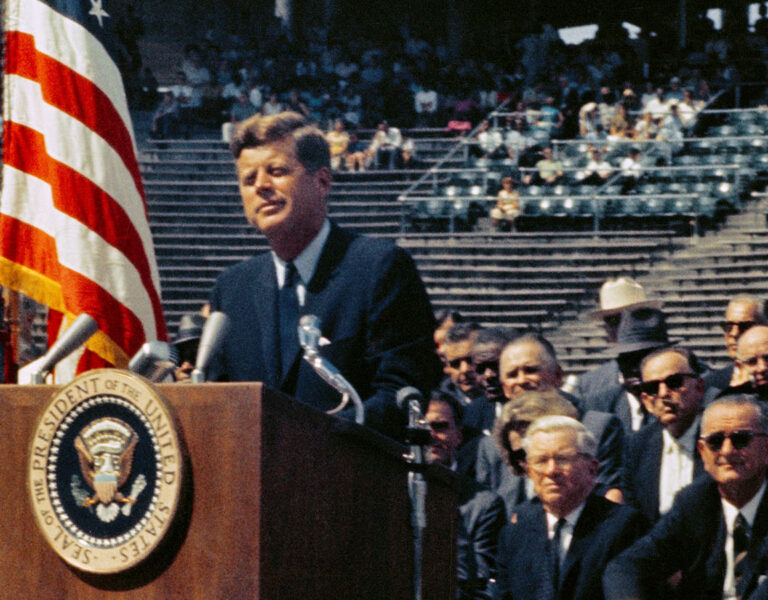In uncertain times, business leaders must articulate a clear and concise plan that cuts through the noise. Dev Patnaik explains in Forbes the two questions every CEO should answer right now to establish certainty, meaning and direction for their business and team.
Depending on the sector, leaders are uncertain whether they should be cutting costs or doubling down on growth or both. Of CEOs surveyed by PricewaterhouseCoopers, a shocking 40% said their organization won’t be economically viable in a decade. Yet many also said the uncertain economy makes them hesitate to invest in future-focused initiatives.
But people need a plan – the simpler, the better. As attention spans shorten, it’s more important than ever to articulate a clear, compelling way forward. That doesn’t mean having all the right answers. It does mean getting everyone focused on the right questions.
That’s why I advise leaders and aspiring leaders to take a few moments to consider these two simple yet deeply important questions.
The first one should be obvious:
Where do you want your business or your team to be at the end of the year?
You’d be surprised at how many struggle to answer.
Of course, all companies have some kind of strategic plan. Yet it’s often too convoluted or too vague. It’s buried in 50-page strategic reports or dense PowerPoint presentations. One CEO I know presents their strategic plan over a two-day, all-company, non-stop Zoom meeting.
What people need are focused challenges: clear, pithy articulations of what we’ll achieve together.
It should be simple. Take President John F. Kennedy’s 1961 iconic one-line commitment to focus America’s space efforts. “I believe that this nation should commit itself to achieving the goal, before this decade is out, of landing a man on the Moon and returning him safely to Earth.”
The statement’s galvanizing power lay not only in its brevity and ambition but in its specific timescale and clear objective: Put a man on the moon and bring them back to Earth. No one could say it wasn’t clear what success looked like.
A strong focused challenge could read something like: “Transform the digital experience for our customers” or “Reset the pricing model with our channel partners”. There should be three to five such challenges in any given year. That’s easier and more effective than a 50-page deck.
Why do leaders have such a hard time with this? Most mistakenly believe that they need to have all the answers. Rather than trusting their teams with a challenge, they lay out detailed plans to execute.
Let’s revisit Kennedy’s moonshot. There were no hows. No budgets. No detail on rocket fuel, or calculations on landing modules. Success wasn’t a given. After all, the first satellite in space had been Russian. The first mammal in space was a Russian dog. The first human was a Russian, too. America was 0 for 3 when Kennedy set his challenge.
Of course, you have to make sure that you’re focusing people on the right problem. Too often, we gravitate to problems we know how to solve, rather than the problems that most need solving.
Back in 2001, most people who read Blockbuster Video’s annual report thought it was entirely reasonable for the company to prioritize growing its DVD marketing and distribution. While CEO John Antioco was clear and convincing, he missed what mattered: Blockbuster was about to face a digital streaming revolution that would drive it into bankruptcy a decade later.
It’s natural to pick immediate, complex challenges. But that won’t protect you from what’s next.
Instead, ask yourself what your Blockbuster moment could be, and how to get ahead of it. The answer often lies outside of your industry. For instance, financial services execs should be viewing Southwest Airlines’ technology debacle over Christmas as a major wake-up call to upgrade legacy systems and transform their customers’ generally poor digital experience.
After setting a few focused challenges for the year, it’s time for the second most important question:
Where do you want to be at the end of the year?
The goals you set for yourself are just as important as those you set for the organization. It simply can’t be that the world is changing, your industry is changing, your company needs to change… but you don’t need to change at all.
For both, it’s important to get organizational buy-in. The best leaders rely on others to give them honest feedback. And when they get it, they acknowledge their shortcomings and focus on personal growth and change.
It’s a good idea to write your answers to these questions down and keep them in front of you.
How to Manage Through the Current Gloom and Doom
download, save, share
Oops! We could not locate your form.
Share the answers to the first question with your team. It might be helpful to share the personal list with others as well. I know one exec who sits down with her spouse over the holidays to envision where they want to be next year, and they check in with each other over the next 12 months.
I’ve seen a growing number of leaders sharing their “personal project” list with their teams. Being that vulnerable with direct reports may feel risky but I’ve seen that it’s a highly effective way to model a culture of growth, engendering loyalty and accountability.
The crazier the world gets, the more valuable it becomes to provide certainty, meaning, and direction. Leaders can achieve this by staying humble and keeping everyone laser-focused on the big challenges that matter most.
This article appeared in Forbes on February 24, 2023.

 Dev Patnaik
Dev Patnaik



